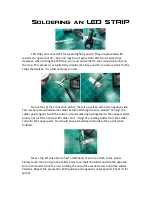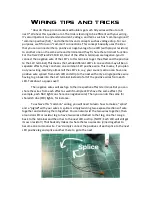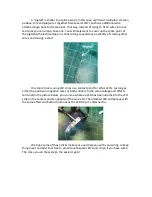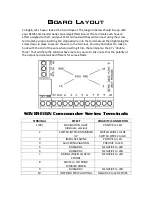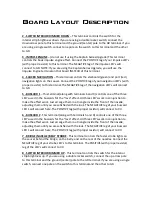
Soldering an LED
We realize not everyone has experience with electronics and, in particular, using
a soldering iron. So the Big Easy team thought it would be a good idea to include a little
basic tutorial here to make this process simple for you. With just a little bit of practice,
you can solder an LED like the pros! Let’s check it out… (if you’re familiar with this
technique, feel free to skip to the next section)
Obviously, the first thing you’ll need is an LED and a resistor. For this example,
we’re using a 5mm Cool White LED and a standard 470 ohm resistor, like most of the
resistors included in your kit. These resistors are designed for a 9V or 12V power source.
Use a resistor calculator (or “Ohm’s Law”) for help in finding out which ohm rating you
need for your power source if using something different. Your kit comes with
appropriate resistors for the included power source. (Deflector/Impulse resistors may
be different as those effects connect to a 5V terminal instead of the higher 9V or 12V)
Notice on your LED that each has a long metal lead and a shorter one. In almost
all cases, the longer leg is positive and the shorter leg is negative. Also, on 3mm and
5mm LED’s, there is a noticeable indentation on the very low ring around the base of
the bulb on the negative side. These will help you know which lead is which.
The first step is to wrap one metal lead (leg) of the resistor around one lead (leg)
of the LED. NOTE: It does not matter which leg of the resistor goes on the LED leg as
resistors are not polarized. Also NOTE: The resistor can be put onto EITHER leg of the
LED. However, we strongly recommend always choosing the same one. (we tend to
choose positive, as shown, because that’s how we were each taught, but it doesn’t
matter) The reason to always use the same leg is so that, once you clip off any excess
metal on the leg of the LED, you’ll still know positive from negative.







